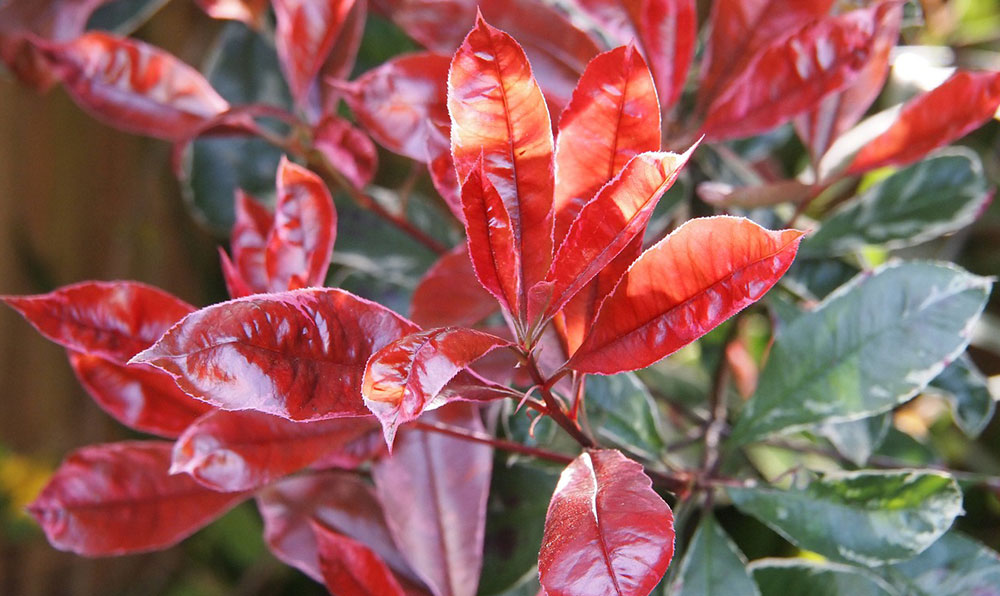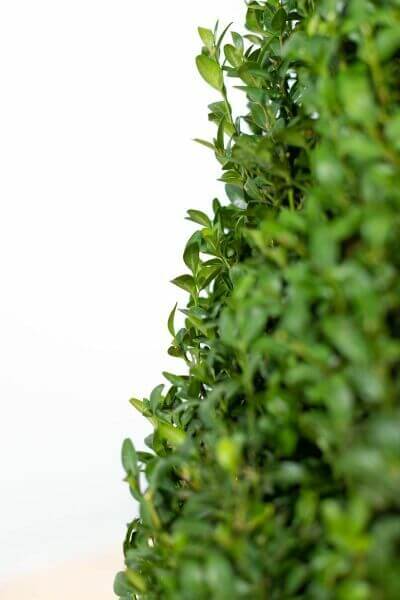Best Hedging Plants For Modern Gardens
Best Hedging Plants For Modern Gardens
Blog Article
Best Hedging Plants For Harsh Conditions
Enhance your garden's appeal with rich hedge varieties such as Yew (Taxus), Thuja, Laurel, Photinia, and Bamboo, commemorated for their structural stability and environmental benefits.
Yew and Thuja offer evergreen coverage and winter strength, while Laurel offers fast development and broad, fragrant leaves.
Photinia adds seasonal beauty with its vibrant red foliage, and Bamboo provides a low-maintenance, serene atmosphere.
These hedges enhance air quality, decrease sound, and develop tranquil, private spaces.
Correct planting, spacing, and upkeep ensure vigorous growth and eco-friendly harmony.
Explore how these rich ranges can raise your garden's beauty and well-being.
Key Takeaways
Change Your Garden With Lush Hedge Ranges
- Select Yew for its dense, evergreen growth and exceptional durability.
- Go with Laurel for its quick growth and broad leaves, ensuring quick personal privacy.
- Pick Photinia for its dynamic seasonal foliage, which turns a striking dark red.
- Use Bamboo for a low-maintenance, winter-hardy hedge with visual appeal.
- Area plants 2-3 per meter and prune routinely for ideal growth and health.
Popular Hedge Plants
When changing a garden with rich hedge varieties, it's vital to consider popular hedge plants such as Yew, Thuja, Laurel, and Photinia due to their special qualities and benefits.
Yew (Taxus) is highly respected for its longevity and dense, green growth, making it a prime option for sustaining landscapes.
Thuja is noted for its evergreen foliage and robust winter season resilience.
Photinia adds seasonal vibrancy with red leaves that darken gradually, creating dynamic visual appeal.
Laurel uses quick development and fragrant, broad leaves, perfect for quick privacy.
Additionally, Bamboo is an exceptional choice for ambiance, providing a low-maintenance, winter-hardy alternative that boosts the garden's aesthetic with its stylish, swaying walking sticks.
These selections cater to a range of horticultural needs and preferences.
Benefits of Garden Hedges
Garden hedges offer a wide variety of benefits, making them a valuable addition to any landscape. These natural barriers are affordable to execute and provide considerable wind protection, improving air flow and contributing to sound reduction. The dense foliage of hedges like Thuja and Beech guarantees privacy by obstructing exposure, developing a tranquil and remote environment.
Hedges also play an important role in microclimate guideline, providing a stable environment that promotes plant development and decreases temperature level variations. Their detailed leaf structures filter toxins, improving air quality and contributing to a healthier garden community.
Moreover, hedges master noise reduction, soaking up and deflecting sound waves to lower ambient noise levels. This dual functionality of offering both acoustic and visual personal privacy boosts the total tranquility and aesthetic appeal of any garden.
Planting and Maintenance Tips
For a successful hedge, meticulous preparation of the planting location is crucial. Ensure the soil has proper pH and drain to support strong root advancement.
Area the plants properly for the selected species. Water the hedge frequently during its preliminary development phase, adjusting as needed with seasonal modifications.
Carry out a organized insect control and disease prevention method, utilizing natural or chemical treatments when required. Frequently examine for aphids, mites, and fungal infections.
Apply mulch to keep moisture and suppress weeds. Seasonal pruning promotes thick growth and air flow, important for plant health.
Following these guidelines will assist you cultivate a dynamic, well-maintained hedge that enhances the appeal of your garden.
Spacing and Cutting Standards
Spacing and Trimming Standards
Proper spacing and cutting are vital for cultivating healthy, visually appealing hedges. Adequate spacing makes sure each plant receives enough nutrients, light, and airflow.
Follow these standards for ideal hedge upkeep:
- Spacing: Position hedge plants 2-3 plants per meter to encourage robust development.
- Pruning Methods: Regular pruning is vital for maintaining wanted hedge height and shape. Trim brand-new growth in summertime and cut down older wood during winter season.
- Seasonal Care: Adjust cutting approaches and schedules according to seasonal requirements to ensure plant health.
- Hedge Height: Frequently monitor and trim to keep the desired hedge height and attain uniform aesthetics.
Following these steps will ensure your hedge prospers, boosting both the appeal and performance of your garden.
Picking the Right Hedge
Picking the Right Hedge
Picking the proper hedge includes evaluating factors such as mature height, foliage density, and ecological strength. Effective hedge plant choice requires understanding each species' growth attributes and site-specific versatility.
For example, Yew (Taxus) uses outstanding durability and thick development, while Thuja is significant for its winter resilience. Additionally, considering maintenance requirements is crucial; fast-growing types like Laurel or Privet demand routine trimming, whereas low-maintenance alternatives like Bamboo or Ivy might be more effective for those seeking very little maintenance.
Environmental aspects such as soil type, light accessibility, and wetness conditions ought to likewise guide the choice procedure. This careful method ensures the selected hedges will thrive, offering both functional and visual advantages to the garden landscape.
Delivery and Planting Suggestions
To ensure your hedge plants flourish, they must be provided by specialized couriers and planted immediately upon arrival.
Follow these necessary steps for successful planting:
- Soil Preparation: Enhance the soil with natural matter to enhance drainage and nutrient content.
- Planting Depth: Develop a trench twice the width and equal to the depth of the root ball.
- Watering Strategies: Water completely after planting, keeping the soil consistently moist however not saturated.
- Mulching: Apply a layer of mulch to keep wetness and reduce weeds.
Consumer Assistance and Service
Given the essential role of prompt support in horticultural pursuits, our consumer assistance group is available six days a week through telephone, email, and social media to offer professional guidance and quickly attend to any issues. Their commitment to fast action times makes sure consumer satisfaction by resolving queries related to plant health, optimum planting approaches, and upkeep schedules.

Reaction Time
-----------------
Telephone
Within 48 hours
Within 24 hours
This extensive assistance system, strengthened by an excellent 9.3/ 10 consumer rating, highlights our commitment to enhancing the gardening experience for every client.
Frequently Asked Questions
For How Long Does It Take for Hedge Plants to Establish?
Hedge plants typically require one to three years to become fully established, with the exact duration varying by types and growing conditions.
Reliable care throughout this important duration is vital for robust development. Consistent watering, vigilant weed control, and appropriate fertilizer application are pivotal in promoting strong root advancement.
For instance, fast-growing types like Laurel may establish faster, while slower-growing ranges such as Yew may take longer. Thorough upkeep accelerates the establishment procedure, leading to dense and healthy hedges.
What Are the Best Hedge Plants for Personal Privacy?
The concern of the best hedge plants for privacy includes assessing evergreen and deciduous choices.
Evergreen hedges like Thuja, Laurel, and Cypress provide year-round protection, guaranteeing continuous privacy.
In contrast, deciduous hedges such as Beech offer seasonal personal privacy, shedding leaves in chillier months.
Key upkeep ideas for privacy hedges consist of routine trimming, fertilizing in spring, and correct spacing-- usually 2 to 3 plants per meter.
Additionally, constant watering and persistent weed removal are important for promoting healthy, dense development.
Can Hedge Plants Draw In Wildlife to My Garden?
Yes, hedge plants can bring in wildlife to your garden by offering essential advantages like shelter, food, and nesting sites, therefore improving regional biodiversity. Yew, holly, and laurel are exceptional for drawing in birds, while ivy supports a range of insects.
Nevertheless, it is essential to note that there are some downsides, such as increased maintenance to handle pests and regular maintenance. Carefully choosing and keeping hedge varieties can assist stabilize these benefits and disadvantages, eventually cultivating a sustainable and lively ecosystem in your garden.
Exist Any Flowering Hedge Plants Available?
Yes, there are flowering hedge plants offered that can boost the beauty of your garden.
For example, Elaeagnus, likewise referred to as Olive Willow, produces fragrant white flowers in the fall, adding a touch of sophistication.
Photinia, another popular option, showcases vibrant red leaves that mature into a rich green, developing a vibrant visual effect throughout the seasons.
To ensure these plants flourish, it's necessary to practice proper pruning techniques and seasonal maintenance, such as trimming brand-new development in the summer season and cutting down in the winter season.
These measures will help keep the health and aesthetic appeal of your flowering hedges.
How Do I Prevent Pests in My Hedge Plants?
To prevent insects in hedge plants, utilize natural insect control techniques and preserve appropriate hedge care. Present advantageous bugs like ladybugs, which take advantage of hazardous insects, to produce a well balanced community.
Routinely check your hedges for indications of invasion and without delay get rid of any afflicted parts to avoid the spread. Guarantee the health of your hedges by applying balanced fertilizers and providing adequate water.
Make use of mulching to maintain soil wetness and appropriate spacing to decrease plant stress and promote robust growth. These practices jointly assist in lessening insect issues and maintaining a healthy hedge.
Conclusion
In essence, picking the ideal hedge varieties such as Yew, Thuja, and Laurel can transform any Additional hints garden into a serene sanctuary. These plants offer year-round greenery, boost aesthetic appeal, and offer useful benefits like noise decrease and wind security.
Proper planting techniques, precise spacing, consistent watering, and seasonal cutting are important for ideal growth.
Reputable delivery services and skilled client support guarantee a seamless experience from purchase to planting, making it easier than ever to elevate your outside space.
Garden hedges use a plethora of benefits, making them an important addition to any landscape. These natural barriers are affordable to implement and offer significant wind defense, enhancing air blood circulation and contributing to noise decrease. The dense foliage of hedges like Thuja and Beech makes sure privacy by blocking visibility, producing a serene and secluded environment.

Pruning Techniques: Regular pruning is necessary for keeping preferred hedge height and shape. Trim brand-new growth in summer and cut back older wood throughout winter.
Report this page